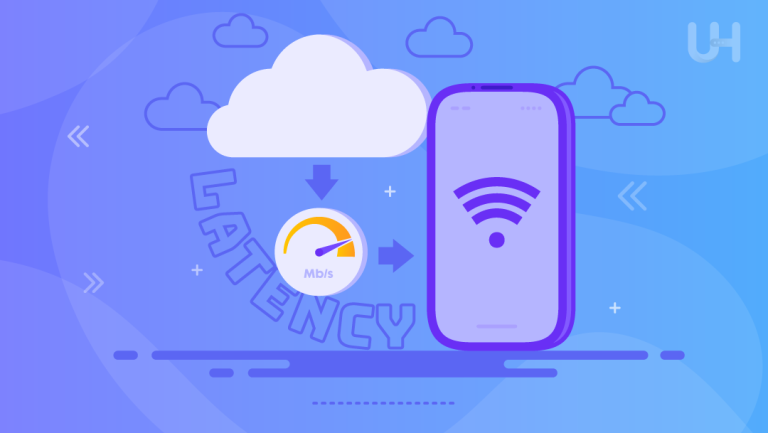One of the areas of modern computing that is very important is the RDP server (Remote Desktop Protocol), which allows people to access computers and networks from remote locations. It also increases productivity and offers a variety of services in different fields and industries.
In this blog, we are going to examine what an RDP server is, its function, and why it is pertinent for businesses, academic institutions, and various other domains.
Understanding RDP
Remote Desktop Protocol (RDP) is one of the most important tools in remote computing as it is a proprietary protocol designed by Microsoft. Its main purpose is to grant access to a computer on a connected network from another computer. This means that users are able to control and use the features of a system that is miles away as if they are in the same room.
Historical Context
RDP first appeared during the days of Windows NT as Microsoft’s first attempt at creating remote desktop services. Over the years, with advancements in networking and computing technology, RDP has been further developed and is considered the most essential form of remote access. It has had many different variations over the years.
What is RDP Server?
The RDP server, or Remote Desktop Protocol server, is a central part of the remote desktop computer framework. Essentially, it operates as a computer system that is set up to accept incoming remote desktop connections from RDP clients. Its primary task is to serve the desktop environment with applications and other resources for remote users to access over a network connection. With this capability, an RDP server allows users to remotely control and access computing resources as if they were situated on the server’s premises.
Distinguishing Between RDP Server and RDP Client
Understanding the concept of the RDP server and RDP client is crucial to knowing how remote desktop connections work. An RDP server acts as the central system that holds the desktop environment and its applications, while an RDP client acts as the end-user device from which the remote desktop session is launched. The client device relays the input command like a mouse or keyboard action to the server. The server processes the input commands and sends back the appropriate output, which is the desktop view. This two-way information exchange enables a user to control the remote desktop servers regardless of their location.
Components
The functionality of an RDP server is dependent on a particular server’s software and the operating system in place. The sole component charged with providing the function of an RDP server differs from the operating system and the implementation case. To illustrate, Microsoft Windows uses Windows Remote Desktop Services (RDS) for Hosting Remote Desktop Protocol (RDP) servers on Windows VPS. RDS has a fully functional set for configuring, administering, and safeguarding remote access desktop logins in a Windows 10 VPS environment.
Besides Microsoft’s solutions, there is a great number of other available RDP server software products for various operating systems and purposes. These products replicate the functions of Windows RDS, thus allowing corporations to set up RDP servers on Linux distributions and macOS systems. Some of the well-known third parties include FreeRDP, XRDP, and Apache Guacamole, which are all RDP server software with another set of functions and run on various operating systems.
Additionally, the RDP server comes with an entire ecosystem of the information system which provides networking, security, and resource management capabilities. Administrators can control access rights, security levels, and sessions enabling remediation of the remote desktop to organizational policy. Proper supervision of RDP server software and system settings within the organization can maximally minimize the risk of remote access to computing resources while securely protecting the organization’s resources and information.
Enhance Your Remote Access Capabilities
For any business that wants to utilize RDP servers for remote desktops, central IT management, or an affordable infrastructure, rest assured our solutions are scalable and efficient. Get in touch with us for omnidirectional support for your remote team.
How Does RDP Work?
Connection Process
Setting up a remote desktop connection over the RDP server requires a number of preset procedures that aim to protect the communication between the client and the server while making sure it is carried out efficiently and effectively.
- Initiation by the client: A client device elicits a desktop session from the client side: a connection request is sent to the RDP server, which is referred to as the remote server. Any connection request contains at least the server’s IP or its hostname. In some cases, the user credentials need authenticating, so these have to be sent as well.
- Authentication process: The server subsequently triggers the authentication action to check the client’s identity after receiving a connection request. The server frequently asks the user to input sufficient credentials such as a username and password. The server can also use a complex authentication system depending on the security checks that have been set. These systems include multi-factor authentication or certificate-based authentication.
- Session establishment: After the client-side credential checks pass, the RDP server is able to connect the user to the remote desktop environment residing within the server. This step means that user profile data is extracted, a desktop session is created, and hardware resources are prepared for the remote user.
Data Transmission
The RDP server and user would communicate through the network in relation to a given set of actions, these include:
- Encryption: RDP makes use of strong encryption methods designed to protect the data exchanged between the server and user, ensuring that the sensitivity and privacy of user credentials, mouse and keyboard activities, and screen data are not captured or tampered with maliciously.
- Compression: To minimize the latency and optimize performance, RDP utilizes data compression methods to minimize the size of packets sent over the network. When data is unnecessarily large, RDP sessions become less responsive to user commands, especially on remote desktop sessions where the bandwidth is low. Having data sent over the network in compressed form, RDP improves the responsiveness of sessions since decompression can be performed after reception of the data.
Session Management
Session management is one of the main factors that guarantee the operation of the RDP server and the delivery of services remotely. Some of the elements of RDP management are:
- User access control: The RDP server employs access control mechanisms to define the role of the user in the scope of remote desktops. Administrators can apply user-based permissions, restrict the use of certain applications or resources, and audit users for compliance with defined security policies.
- Session persistence: An RDP server guarantees the persistence of certain sessions; that is, the state of active sessions on the desktop remotely is preserved despite disconnections by the network or the client end. This leads to a smoother user experience while in a working environment, as users are able to mitigate the effects of unreliable connectivity when returning to their tasks after some time.
To summarize, an RDP server works through the integration of creating access, transferring information, and managing a session. These elements work together to allow users to securely interact with device resources remotely.
Key Features of RDP Servers
User Interface
The user interface, or (UI), of an RDP server, is the connection point for remote users with the desktop that the server hosts. RDP servers include a number of features that smooth out the interaction for the user to ensure a great experience:
- Full desktop experience: With RDP access, remote users can work in a fully fledged desktop environment as if they were working on a local computer. Users can utilize desktop components like icons, desktop taskbar, and system tray icons, which means they can do a lot of things work-wise at home.
- Remote applications: Users can start a single application on the RDP server without having the whole desktop environment on view. The user interface is referred to as RemoteApp. Moreover, stress for users is reduced as RemoteApp allows many applications to be used independently. Moreover, it enhances productivity and flexibility.
- Clipboard sharing: RDP servers enable the sharing of the clipboard; with this ability, users can copy text, images, and others to and from their local devices. This function makes it easier to bring information from the local and remote environments. Also, it eliminates the need for other methods of transfer and makes work processes more smooth.
Security Features
Safety poses a challenge in regard to remote desktop environments. To defend data and resources, RDP servers have a number of built-in features:
- Network-level authentication (NLA): NLA requires users to verify their identity before connecting to the remote desktop. By authenticating at the network level, NLA enhances the security of the authentication. Additionally, it decreases the server-side breach risk.
- Encryption: The data within the RDP session, such as the user name, password, keyboard, and mouse inputs, as well as the visible screen, gets protected with the high-level encryption algorithms that the RDP server uses. These algorithms defend every piece of information exposed from being listened in to and stolen by unfriendly persons.
- Firewalls: RDP servers usually work in combination with web application firewalls and help protect a local area network as well as offer security for remote desktop services. Inbound RDP connections can be limited to certain IP addresses or networks by setting up web application firewall rules and so improving the security of the server. Also, diminishing the attack surface increases the overall security of the server.
In order to achieve better control of the RDP servers, strong authentication, routine software updates, and other necessary security patches should be followed. Furthermore, active policies of access, monitoring, and reporting suspected activity over remote desktop sessions should be made.
Performance Optimization
RDP servers incorporate multiple capabilities in order to maximize performance and responsiveness while using the activated networks:
- Bandwidth usage optimization: With RDP, the amount of bandwidth being used is automatically adjusted to the conditions of the network, which helps to optimize performance and minimize the use of bandwidth. This behavior enables seam Remote Desktop function even with low-bandwidth situations, which increases productivity for users.
- Adaptive graphics: RDP servers apply adaptive graphics to optimize the delivery of high-end graphical content. Adaptive graphics, in conjunction with available bandwidth, client capabilities, and device-resolving bandwidth, allow for the adjustment of images, which ensures ideal visual and responsive working quality while guaranteeing optimal performance.
- Device redirection: RDP servers have the option of device redirection, and these allows the user to use some local peripherals like printers, drives, and USB from within the remote desktop session. This facilitates productivity for local and remote users. It also eliminates the tedious process of transferring files manually between machines or setting up the machine with the required files.
With the aid of these performance optimization attributes, RDP servers manage to provide users with responsive and efficient remote desktop experiences even on tough, varying network conditions, which allows users to work from anywhere with robust security protocols enabled.
Benefits of Using RDP Servers

Remote Access
RDP servers fundamentally enhance the concept of remote access by allowing users to access their desktops from anywhere in the world with an internet connection. Employees are, therefore, able to connect to their workstations and applications, whether they are in the office, at home, traveling, or even onsite with clients.
Such enhanced remote access, courtesy of RDP servers, boosts productivity and collaboration by enabling employees to remain connected and productive irrespective of where they are physically located. Whether it’s collaborating with the team or accessing important files, users are guaranteed the flexibility and productivity that RDP offers.
Cost Efficiency
The greatest benefit of RDP servers is cost saving within the physical infrastructural elements along with maintenance. With the traditional desktop configurations, every unit of a desktop requires hardware upgrading, maintenance, and upgrade individually, and RDP servers consolidate all computing resources on a central server-based infrastructure. The benefits of cost consolidation, such as optimized resource utilization, reduced hardware procurement and maintenance expenditure, and lower energy costs, are achieved through this resource consolidation.
Furthermore, RDP eliminates any form of desktop hardware changes. This is so because computing resources are fully managed and maintained on a server. Utilizing RDP technology enables businesses to save significantly on hardware, energy, and IT support expenditures. This allows better return on IT spending and enhances economic viability as a result.
Scalability
RDP servers are remarkably flexible and can be adjusted to the changing business needs and scalability of the user. Be it adding new users, additional applications, or expanding the servers, RDP provides a lean integration to increasing workloads without any significant infrastructural investment or interruptions.
Managers can add and remove server instances, as well as allocate resources, based on the demands of RDP servers. Employees of an organization are able to make alterations swiftly, respond to sharp rises in user requests, and make cost effective decisions while meeting the evolving needs of the business. Companies can maximize and scale their infrastructure, drive innovation, and proff them against any future challenges, making the most of RDP servers.
Centralized Management
Unlike other platforms, RDP simplifies the management of RDP servers for an organization, as computing resources, applications, and user access to information and data can be managed from a single point of control. People given administrative privileges can deploy, configure as well as manage software applications and thus maintain compliance with organizational policies.
RDP further allows the centralization of user account management, enforcement of security measures, and application of software upgrades. This reduces the amount of work the IT staff has to deal with, hence increasing the operational effectiveness. Thus, the IT servers can carry out maintenance, troubleshooting, and software deployment autonomously, enabling the team to focus on improving organizational value. Simply put, RDP servers use central management to strengthen Agility, Governance, and Efficiency to achieve goals.
Experience RDP Servers Risk-Free!
Are you ready to take advantage of RDP Servers for faster remote access as well as better IT management? You can begin today without any risk. If you want, try Free RDP solutions from UltaHost now!
Practical Applications of RDP Servers
Business Use Cases
RDP servers allow employees to work remotely by giving them access to desktop environments and important applications from any place. In addition, they are great for IT support processes since technicians can perform most technical support tasks remotely, which helps to reduce downtime for the organizations. RDP servers also allow centralized administration so that IT managers can configure and manage software applications at a user level from one single location.
Educational Institutions
As RDP Servers allow remote access to students and faculty, these servers are very helpful in educational environments. In addition, they give students and faculty remote access to specialized labs, software applications, and educational resources. They also help to make the remote learning programs effective by allowing access to virtual classrooms, course content, and collaborative tools. With this level of flexibility, educators and students of diverse learning needs support distance learning programs. This better the overall educational experience.
Healthcare
RDP is important in the healthcare sector as it allows remote access to medical files, diagnostic imaging systems, and healthcare applications. They allow healthcare personnel to evaluate and update the patient’s records and consult with other professionals remotely. RDP servers also support telemedicine projects enabling patients to have consultations and virtual visits with professionals at any time. Additionally, it increases the availability of healthcare services to patients in rural or underserved locations.
Common Issues and Troubleshooting
Connection Problems
When using RDP servers, connection problems are the most frequently encountered challenges. These problems may arise from several causes. Some of these include, but are certainly not limited to the following:
- Network connectivity: The operating RDP server may be having network connectivity issues. Troubleshooting steps may include checking network cables, routers, and switches. Verifying internet connectivity at both ends is also necessary.
- Firewall settings: Firewall and network security may be blocking RDP traffic which may lead to a connection not being successfully established. Administrators must make sure that proper firewall rules allow RDP traffic to go through the network. This can be done by opening certain ports or enabling RDP access through firewall settings.
- Authentication errors: The failure of authentication can be due to wrong passwords and usernames associated with the user. Furthermore, it may arise due to expired passwords or incorrectly set up authentication parameters for the RDP server. In this case, users need to make sure that their usernames and passwords are correct. Moreover, they have entered permissions to access the RDP session. Also, ensure that the authentication options set for the users are in alignment with the organizational policies.
Performance Issues
Remote desktop sessions greatly depend on the usability and the promptness of performance within the desired group. Here is a list of such hindrances that slow down performance:
- Slow performance: This can be due to the network bandwidth being too low, high memory usage, or excessive application activity in the RDP environment. System resource usage should be monitored together with bandwidth and performance bottlenecks to ensure an overall improvement in responsiveness.
- Latency: Latency is the time it takes for the client to get from one point to the other in the data transmission process. This issue can make the experience worse while also restricting productivity. Eased network configuration and changing server selection to ones that are nearer to the client will also help reduce latency. Also, this results in improved performance in remote desktop sessions.
- Screen resolution: You may experience difficulties when the desktop session does not correspond to the client device’s native resolution. Problems also arise from improper display configurations. Resolving display settings and addressing compatibility issues on both client and server configurations can correct the screen resolution issue. In addition, it improves the image quality for remote desktop sessions.
Security Concerns
When using RDP servers for accessing remote desktop environments, security becomes of utmost concern. Potential security risks include:
- Brute-force attacks: Brute-force attacks on RDP servers can lead to capturing login credentials and subsequently accessing classified information. The risk of brute force attempts can be minimized by using complex passwords. Moreover, setting account lockout features and using multi-factor authentication can also help prevent attacks.
- Man-in-the-middle attacks: Man-in-the-middle attacks include intercepting and listening to RDP traffic sent over from the client to the server. In addition, it can provide some form of information to the attacker. This vulnerability can be counteracted by the encryption of RDP traffic with strong security protocols such as TLS/SSL or the use of an SSL certificate that also assures the integrity of the data.
- Exploitable vulnerabilities: RDP servers are at risk of being compromised through a breach of security protocol. Furthermore, its abuse can endanger the integrity of the system, and unauthorized persons can gain access to confidential information. Network segmentation and prevention systems will protect the RDP servers from being compromised and enhance security posture.
Conclusion
Remote Desktop Protocol (RDP) servers can be utilized by both organizations and individuals. These pose challenges in terms of remote access, productivity, and ICT management across all disciplines and domains.
RDP servers have enabled businesses to remain agile to changes in the working environment, drive educational programs, and support telemedicine. This has been made possible due to remote access to the desktop environment, applications, and other resources. Connection stability, performance levels, and other challenges associated with RDP usage is something that is imperative. This can be mitigated using effective and efficient troubleshooting and mitigation strategies.
Boost your business reputation and have uninterrupted on-site help with the USA RDP Server from UltaHost. Enjoy the privileges of quality, secure, and efficient remote desktop services tailored to suit your requirements. Optimize your IT infrastructure today!
FAQ
What is Remote Desktop Protocol (RDP), and how does it work?
RDP is a Microsoft protocol facilitating remote access to desktop environments. It works by transmitting user inputs and screen updates between a client device and a remote server, allowing users to control the server’s desktop remotely.
What are the benefits of using RDP servers?
RDP servers offer remote access convenience, cost savings by centralizing resources, scalability to accommodate growth, and streamlined IT management.
How can I troubleshoot common issues with RDP servers?
Troubleshoot connection issues by verifying network settings and authentication. Address performance problems by optimizing network bandwidth and adjusting display settings. Ensure security by implementing strong authentication and encryption.
What are some practical applications of RDP servers?
RDP servers are used for remote work, IT support, education, and healthcare, enabling remote access to resources and facilitating collaboration across industries.
How do RDP servers ensure security and data privacy?
RDP servers incorporate security features like encryption and authentication. Administrators can enforce strong password policies and regularly update security measures to maintain data privacy and security.










